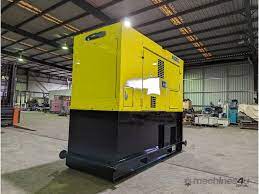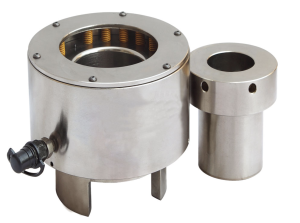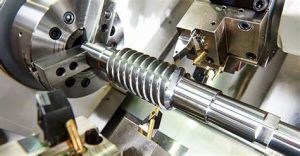
Gas turbine maintenance has undergone advancements to keep up with the evolving technology, in power generation and applications. These machines are renowned for their efficiency in converting fuel into electricity and mechanical power. In this article, we will explore the developments in gas turbine maintenance that are shaping the industry.
Understanding the importance of gas turbine
Maintenance is crucial before diving into these advancements. Gas turbines play a role in power plants, aviation, and various industrial processes. Regular maintenance is necessary to ensure their operation, efficiency, and longevity.
Maintenance is essential to prevent downtime, which can lead to financial losses and operational disruptions. It also helps optimize fuel consumption and reduce impact by ensuring that turbines operate at their peak efficiency, also extends the lifespan of gas turbines resulting in cost savings on capital expenditures.
Advanced Diagnostics and Monitoring Systems
One notable advancement, in gas turbine maintenance, is the emergence of diagnostics and monitoring systems. Cutting-edge technologies, like sensors, data analytics, and machine learning are utilized by these systems to evaluate the health and performance of gas turbines. By monitoring in time, operators can identify issues before they become critical, leading to more efficient maintenance scheduling.
Additionally, these systems provide insights into the turbine’s health, facilitating proactive decision-making. For instance, through data analytics, it becomes possible to predict when specific components are likely to fail and arrange replacements to minimize downtime.
Furthermore, these systems contribute towards optimizing parameters by offering data on combustion dynamics, exhaust temperatures and other crucial factors. This real-time information allows for adjustments that maintain peak efficiency levels. As a result of this enhanced control over parameters, there are fuel savings achieved and reduced emissions.
Predictive Maintenance
Predictive maintenance is revolutionizing the gas turbine industry by utilizing insights derived from data-driven approaches of fixed schedules or reactive measures when breakdowns occur. Employing machine learning and artificial intelligence techniques is crucial in maintenance as they analyze both real-time data, for patterns or anomalies that may indicate potential failures or performance degradation.
For example, unusual temperature readings or patterns of vibration may indicate issues, with components. By addressing these concerns, operators can prevent unplanned outages and repairs. Predictive maintenance not only saves money but also enhances the reliability of gas turbines making them more dependable sources of power generation.
3D Printing and Additive Manufacturing
The emergence of 3D printing and additive manufacturing has revolutionized the production of gas turbine components and spare parts. These technologies enable the cost-effective creation of custom-designed components with exceptional performance characteristics.
In the past replacing worn-out components in a gas turbine could be a time-consuming and expensive process that often led to downtime. However, with printing these components can now be produced on-site or on demand reducing lead times and minimizing disruptions.
Moreover, additive manufacturing facilitates the production of lighter-weight components that enhance the efficiency and reliability of gas turbines. By utilizing materials and optimized designs for performance, turbines can operate at higher temperatures and pressures – resulting in increased power output and fuel efficiency.
Remote Monitoring and Service
Remote monitoring and service solutions have become increasingly popular in industries, like aviation and power generation.
These systems enable experts to diagnose and resolve issues remotely, reducing the need, for in person visits and minimizing downtime. In the context of maintaining gas turbines, remote monitoring allows experts to assess turbine conditions in time. They can examine data perform diagnostics and optimize performance without being physically present at the site. This approach saves time reduces travel requirements and associated costs.
Additionally remote service solutions promote collaboration among experts globally ensuring that even the challenging maintenance tasks can be tackled with the available knowledge and resources.

Enhanced Training and Skill Development
To keep up with advancements in gas turbine technology it is crucial to provide training and skill development programs, for maintenance personnel. Simulators and virtual reality training have gained popularity as means of educating maintenance teams. These tools offer an environment for trainees to practice tasks and emergency procedures without any risk. By improving their skills in a controlled setting maintenance personnel can confidently handle real world scenarios with competence.
Moreover continuous training and certification programs play a role, in equipping maintenance professionals with the knowledge on cutting edge technologies, safety protocols and industry best practices. Given the evolution of turbine technologies a skilled workforce is an invaluable asset.
Environmental Sustainability
In addition to prioritizing enhanced efficiency and performance, present-day gas turbine maintenance practices are increasingly geared towards promoting sustainability. With growing concerns about greenhouse gas emissions and air quality the industry actively seeks solutions to minimize the impact of gas turbines.
To achieve this goal, upgrades and retrofits that optimize combustion efficiency and lower emissions are being implemented. These advancements not prolong the lifespan of turbines but also enhance their eco-friendliness.
Furthermore advancements in emissions monitoring and control systems facilitate compliance, with regulations. These systems possess the capability to automatically fine-tune combustion parameters to minimize emissions while maintaining performance levels.
Conclusion
The gas turbine maintenance sector is currently undergoing a transformation driven by advancements, innovative materials, and evolving practices. These developments not boost the efficiency and dependability of gas turbines. Also contributes to their long-term environmental sustainability. By embracing these modernization efforts, operators and industries can ensure that gas turbines remain sources of power generation and mechanical work for years ahead.





